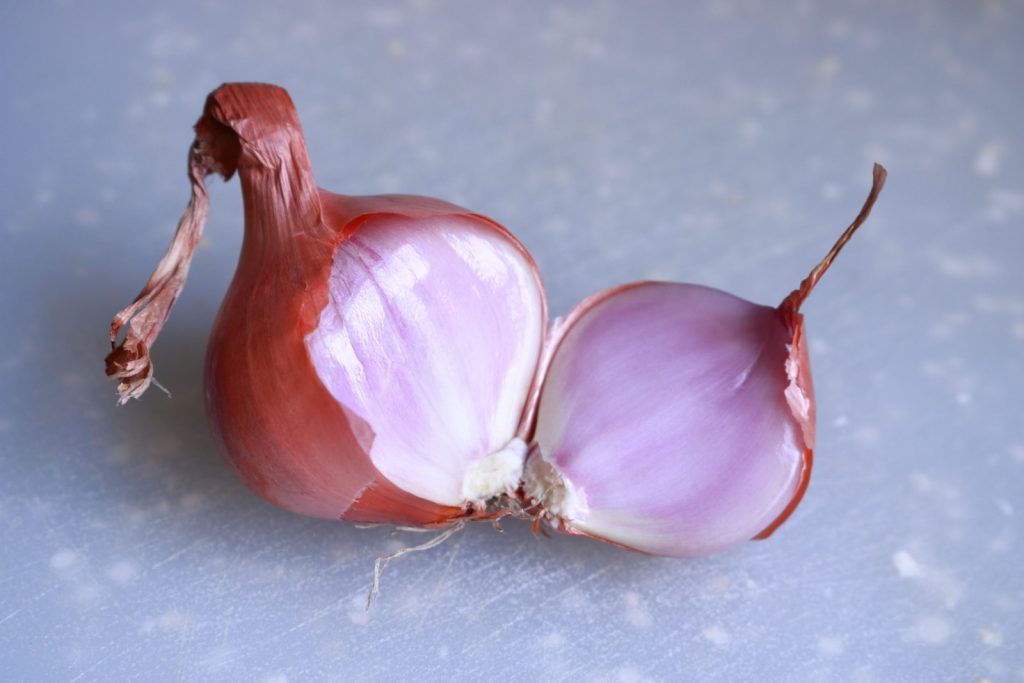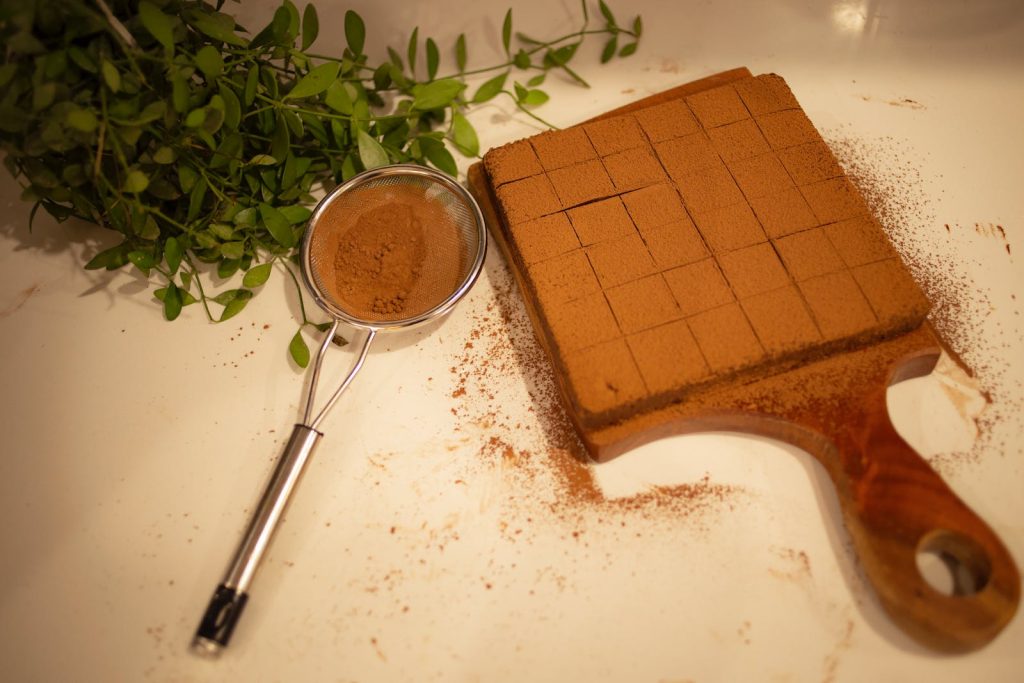
by Health And Healing AI | Nov 25, 2023 | Health
Unveiling the Secrets: How Mint Tea Enhances Your Health & Wellness
If you’re looking for a refreshing and healthy beverage to add to your daily routine, you might want to consider drinking mint tea. Not only is it a delicious drink that can be enjoyed hot or cold, but it also offers a range of health benefits that can improve your overall well-being.

Warm and inviting depiction of mint tea’s refreshing and nourishing qualities.
Mint tea steers fresh or dried mint leaves in hot water. The tea has a cool, refreshing flavor and aroma that can help to soothe your senses and reduce stress. Drinking mint tea can also improve digestion, relieve nausea and headaches, and boost your immune system. Additionally, mint tea is low in calories and sugar, making it a great alternative to sugary drinks like soda and juice.
Research has shown that mint tea may have anti-inflammatory and antioxidant properties, which can help to protect your body against chronic diseases like cancer and heart disease. It can also help to improve your oral health by freshening your breath and reducing the growth of harmful bacteria in your mouth. So, if you’re looking for a simple and natural way to improve your health, try adding a cup of mint tea to your daily routine.
What is Mint Tea
Mint tea is an herbal tea made from the leaves of the mint plant. It is a popular beverage enjoyed worldwide for its refreshing taste and numerous health benefits. Mint tea can be made using diverse types of mint, including peppermint, spearmint, and water mint. Each type of mint has a unique flavor profile and aroma.
Mint tea can be made using tea bags or loose-leaf tea. To prepare a cup of mint tea, place a tea bag or a teaspoon of loose-leaf tea in a cup and pour hot water over it. Let it steep for a few minutes, then remove the tea bag or strain the loose-leaf tea. You can add honey or lemon to sweeten the tea or enjoy it plain.
Fresh mint leaves can also be used to make mint tea. Add a handful of fresh mint leaves to a cup of hot water and let it steep for a few minutes. Strain the leaves and enjoy the tea.
Mint tea is a great alternative to traditional tea and coffee. It is naturally caffeine-free and can be enjoyed any time of the day. The next time you want a refreshing and healthy beverage, try a cup of mint tea.
Nutritional Profile of Mint Tea
Mint tea is a caffeine-free, sugar-free, and low-calorie beverage that is a great alternative to sugary drinks. It is made from the leaves of the peppermint or spearmint plant and has a refreshing and soothing taste.
Mint tea is rich in antioxidants, which help to protect your body from damage caused by free radicals. Free radicals are harmful molecules that can cause cellular damage and lead to chronic diseases such as cancer and heart disease.
In addition to antioxidants, mint tea contains several important nutrients, including vitamins C, A, and potassium. Vitamin C is an essential vitamin that helps to boost your immune system and protect your body from infections. Vitamin A is important for healthful vision, while potassium helps to regulate your blood pressure and keep your heart healthy.
Mint tea is also a major source of hydration. Drinking enough water is essential for good health, and mint tea can help you stay hydrated throughout the day. Studies have shown that drinking tea, including mint tea, can be just as hydrating as drinking water.
Overall, mint tea is a healthy and refreshing beverage that can provide various health benefits. Whether you enjoy it hot or cold, it’s a terrific way to stay hydrated and boost your intake of important nutrients and antioxidants.
Health Benefits of Mint Tea

Professional illustration highlighting menthol’s effect on digestive tract muscles.
Mint tea is a refreshing and delicious beverage consumed for centuries due to its potential health benefits. Here are some of the ways that mint tea may benefit your health:
Digestion
Mint tea is known for its ability to soothe digestive issues such as gas, bloating, and indigestion. The menthol in mint helps to relax the muscles in the digestive tract, which can ease discomfort and promote healthy digestion. Additionally, mint tea may be helpful for those with irritable bowel syndrome (IBS) as it can help to alleviate symptoms such as abdominal pain and bloating.
Cold and Flu
Mint tea may also be beneficial for those suffering from a cold or flu. The antibacterial and antiviral properties of mint can help fight off infections and boost the immune system. Additionally, the menthol in mint can help to relieve congestion and ease coughing.
Nausea and Headaches
Mint tea may also be helpful for those experiencing nausea or headaches. The soothing properties of mint can help to calm the stomach and relieve nausea, while menthol can help to alleviate headaches.
Cognitive Function
Mint tea may also have potential health benefits for cognitive function. The aroma of mint has been shown to improve memory and alertness, making it an excellent choice for when you need to focus and concentrate.
Stress
Finally, mint tea may be helpful for reducing stress and promoting relaxation. The calming properties of mint can help ease tension and promote a sense of calm, making it a wonderful choice for when you need to unwind after a long day.
Overall, mint tea is a delicious and healthy beverage that may offer a range of potential health benefits. Whether you are looking to soothe digestive issues, fight off infections, or simply relax and unwind, mint tea is worth a try!
Mint Tea and Oral Health
Mint tea is a refreshing and delicious beverage that not only tastes great but also has numerous health benefits. One of the most significant benefits of mint tea is its positive impact on oral health.
If you struggle with bad breath, mint tea can help freshen your breath naturally. Mint contains compounds that neutralize the odor-causing bacteria in your mouth, leaving your breath smelling fresh and clean. Instead of relying on chewing gum or breath mints, try sipping on a cup of mint tea after your meals to help keep your breath smelling fresher for longer.
In addition to its breath-freshening properties, mint tea can also help combat plaque buildup in your mouth. Plaque is a sticky film of bacteria that can accumulate on your teeth and gums, leading to tooth decay and gum disease. Drinking mint tea can help reduce the amount of plaque in your mouth, keeping your teeth and gums healthy and clean.
Another benefit of mint tea is that it can help soothe mouth irritation and inflammation. If you have a sore throat or mouth ulcers, sipping on a cup of mint tea can help ease your discomfort. The anti-inflammatory properties of mint can help reduce swelling and pain, making it a natural and effective remedy for oral health issues.
Overall, incorporating mint tea into your daily routine can have numerous benefits for your oral health. Whether you’re looking to freshen your breath, fight plaque, or soothe irritation, a cup of mint tea is a simple and delicious way to support your oral hygiene.
Mint Tea and Essential Oils
Mint tea is not only a delicious and refreshing beverage, but it also offers a wide range of health benefits. One of the most interesting aspects of mint tea is its essential oils. These oils are extracted from the leaves of mint plants and are known for their potent aroma and therapeutic properties.

visualization of essential oil benefits, focusing on pain relief and health effects.
Menthol is one of the primary components of mint essential oils, and it’s responsible for the cooling and soothing sensation that you feel when you drink mint tea. Peppermint oil is one of the most popular mint essential oils, and it’s used for a variety of purposes, including aromatherapy, topical applications, and even in cooking.
Essential oils like peppermint oil contain a variety of other compounds that are beneficial for your health. For example, menthone is a compound that has been shown to have anti-inflammatory and pain-relieving properties. Limonene is another compound found in mint essential oils, and it has been shown to have antioxidant and anti-inflammatory effects.
Aromatherapy is another way to enjoy the benefits of mint essential oils. Simply add a few drops of peppermint oil to a diffuser, and you’ll be able to enjoy the refreshing aroma of mint throughout your home. Aromatherapy has been shown to have various health benefits, including reducing stress and anxiety, improving sleep quality, and boosting mood.
In conclusion, mint essential oils are a powerful and versatile tool for promoting health and well-being. Whether you enjoy mint tea, use peppermint oil for aromatherapy, or incorporate mint essential oils into your cooking, you’ll be able to enjoy the many benefits that these oils have to offer.
Culinary Uses of Mint Tea
Mint tea is not only a healthy drink but also a versatile ingredient that can be used in various culinary applications. The fresh and vibrant flavor of mint tea makes it an excellent addition to many foods and beverages. Here are some of the culinary uses of mint tea that you can try at home:
- Flavoring for Beverages: Mint tea can be used to flavor various beverages, including cocktails, lemonades, and iced teas. You can add a few fresh leaves of mint tea to your favorite beverage to give it a refreshing and cooling taste.
- Flavoring for Foods: Mint tea can also be used to flavor various foods, including salads, sauces, and dressings. You can add a few drops of mint tea to your favorite food to give it a fresh and vibrant flavor.
- Fresh Leaves: Fresh mint leaves can be used to garnish various foods and beverages, including desserts, smoothies, and cocktails. You can also use fresh mint leaves to make a delicious and healthy pesto sauce.
- Taste: Mint tea has a refreshing and cooling taste that can help to soothe your throat and relieve congestion. It is an excellent drink to have when you have a cold or flu.
- Fresh: Mint tea is made from fresh leaves of the mint plant, which gives it a vibrant and fresh taste. You can use fresh mint leaves to make your own mint tea at home.
Overall, mint tea is a versatile ingredient that can be used in various culinary applications. Its fresh and vibrant flavor makes it an excellent addition to many foods and beverages. You can experiment with different recipes and find out which ones work best for you.
Possible Side Effects of Mint Tea

Cautionary visual on mint tea allergies, emphasizing medical attention for symptoms like itching and difficulty breathing.
While mint tea is considered safe to consume in moderation, there are some side effects that you should be aware of.
Allergic Reactions
If you are allergic to plants in the mint family, such as basil, oregano, or sage, you may also be allergic to mint tea. Symptoms of an allergic reaction may include hives, itching, swelling, and difficulty breathing. If you experience any of these symptoms after drinking mint tea, stop consuming it immediately and seek medical attention.
Abdominal Pain and Vomiting
Consuming substantial amounts of mint tea may cause abdominal pain and vomiting, especially in people with a history of gastrointestinal problems. If you experience these symptoms after drinking mint tea, try reducing your intake or stopping it altogether.
Interference with Chemotherapy
Mint tea may interfere with certain chemotherapy drugs, so it is important to talk to your doctor before consuming it if you are undergoing chemotherapy treatment.
Upset Stomach, Heartburn, and GERD
While mint tea is often used to soothe an upset stomach, it may worsen symptoms in some people. If you have gastroesophageal reflux disease (GERD) or experience heartburn or acid reflux, it is best to avoid mint tea.
Kidney Stones
Mint tea contains oxalates, which can contribute to the formation of kidney stones in some people. If you have a history of kidney stones or are at risk of developing them, it is best to limit your intake of mint tea.
Overall, mint tea is a healthy and refreshing beverage that offers many benefits. However, it is important to consume it in moderation and be aware of the possible side effects. If you experience any negative symptoms after drinking mint tea, it is best to speak with your doctor.
Mint Tea Around the World

Illustration of mint tea’s popularity in Europe and Asia with cultural dining settings.
Mint tea is a popular beverage enjoyed around the world. It’s refreshing taste and aroma make it a favorite among tea lovers. In Europe, mint tea is a common drink that is often served after meals. It is believed to aid digestion and freshen breathing. In Asia, mint tea is also popular and is often used for its medicinal properties. It is believed to help relieve headaches, reduce stress, and promote relaxation.
In North America, mint tea is commonly found in grocery stores and is often sold as an herbal tea. It is a great alternative to sugary drinks and is a healthier option. Mint tea is also used as an ingredient in many cocktails and mocktails due to its aromatic flavor.
Mint tea is made by steeping fresh or dried mint leaves in hot water. It can be enjoyed hot or cold and can be sweetened with honey or sugar. Mint tea can be made with several types of mint such as spearmint, peppermint, and apple mint. Each type of mint has its own unique flavor and aroma.
Overall, mint tea is a delicious and healthy beverage that can be enjoyed any time of the day. It is easy to make and can be found in most grocery stores. So, why not try a cup of mint tea today and enjoy its many health benefits?
Conclusion
In conclusion, mint tea is a delicious and healthy beverage that offers numerous health benefits. Whether you prefer peppermint or spearmint, this tea can help alleviate digestive issues, reduce stress and anxiety, and even boost your immune system.
By incorporating mint tea into your daily routine, you can enjoy its refreshing taste and reap the many benefits it has to offer. Try brewing a cup in the morning to start your day off on the right foot or enjoy a cup in the evening to unwind and relax.
Remember to choose high-quality tea leaves and brew your tea properly to get the most out of its health benefits. Experiment with unfamiliar flavors and blends to find the one that suits your taste buds the best.

Evening relaxation scene with a cup of mint tea, emphasizing calm and unwinding moments.
So why not give mint tea a try today? Your body and mind will thank you for it!

by Health And Healing AI | Nov 16, 2023 | Health, Nutrition
Beyond Flavor: The Remarkable Health Advantages of Onion Powder

The Hidden Gem in Your Spice Rack: Onion Powder’s Health Miracles. Photo by Amie Bell
Health Benefits of Onion Powder: If you’re looking for a versatile and flavorful seasoning to add to your meals, look no further than onion powder. Made from finely ground dehydrated onions, this spice is a staple in many kitchens and offers a range of health benefits.
Onion powder is a rich source of essential vitamins and minerals, including vitamins B and C, manganese, calcium, iron, and potassium. These nutrients contribute to a healthy immune system, improve digestion, and reduce inflammation.
Additionally, onion powder is low in calories, making it an excellent option for those watching their weight.
In addition to its health benefits, onion powder is also prized for its flavor and versatility.
It can be used to add depth and complexity to soups, stews, and sauces, and is also a popular seasoning for meat, poultry, and seafood. With its subtle sweetness and savory umami notes, onion powder is a must-have ingredient for any home cook looking to elevate their dishes.
Nutritional Profile
Onion powder is a low-calorie food that is rich in nutrients. A tablespoon of onion powder contains only eight calories, making it an excellent addition to a healthy diet. Onion powder is also low in fat, with less than 0.1 grams of fat per tablespoon.
Onion powder is a reliable source of dietary fiber, with 1.1 grams of fiber per tablespoon.
Fiber is essential for maintaining a healthy digestive system and can also help lower cholesterol levels.
Onion powder is also rich in vitamins and minerals. It contains vitamin C, which is an important antioxidant that helps protect cells from damage caused by free radicals.
Onion powder is also a useful source of vitamin B6, which is vital for maintaining brain function and producing red blood cells.
In addition, onion powder contains minerals such as iron, calcium, manganese, and potassium. Iron is essential to produce hemoglobin, which carries oxygen throughout the body.
Calcium is necessary for strong bones and teeth, while manganese is important for healthy brain function. Potassium is essential for maintaining healthy blood pressure levels and can also help reduce the risk of stroke.
Overall, onion powder is a nutritious food that can be easily incorporated into a healthy diet. Its low calorie and fat content, combined with its high fiber and nutrient content, make it an excellent choice for those looking to improve their overall health and well-being.
Antioxidant Properties
Onion powder is a rich source of antioxidants, which are essential for maintaining good health.
Antioxidants are compounds that help protect the body from free radicals, which are unstable molecules that can damage cells and contribute to the development of various diseases.
Onion powder contains several types of antioxidants, including flavonoids and anthocyanins.
These compounds have been shown to have powerful antioxidant properties, which can help reduce the risk of chronic diseases.
One of the key flavonoids found in onion powder is quercetin. Quercetin is a potent antioxidant that has been shown to have anti-inflammatory and anti-cancer properties.
It is also believed to help reduce the risk of heart disease by lowering blood pressure and reducing cholesterol levels.
Quercetin works by neutralizing free radicals, which can cause cell damage and contribute to the development of chronic diseases.
In addition to quercetin, onion powder also contains other flavonoids, such as kaempferol and myricetin. These compounds have been shown to have anti-inflammatory and anti-cancer properties, as well as antioxidant effects.
They work by scavenging for free radicals and preventing them from causing damage to cells.
Overall, the antioxidant properties of onion powder make it a valuable addition to any healthy diet. By consuming onion powder regularly, you can help protect your body from the damaging effects of free radicals and reduce your risk of chronic diseases.
Cardiovascular Benefits

The Flavorful Heart Protector: Onion Powder’s Cardiovascular Benefits. Photo by Jonathan Borba
Onion powder may have some cardiovascular benefits. The flavonoids in onions have been shown to help lower cholesterol levels.
Prominent levels of cholesterol can lead to the buildup of plaque in your arteries, which can increase your risk of heart disease. By helping to lower cholesterol levels, onion powder may help reduce your risk of heart disease.
In addition to helping lower cholesterol levels, onion powder may also help lower blood pressure. High blood pressure is another risk factor for heart disease. The sulfur compounds in onions may help relax the blood vessels, which can help lower blood pressure.
Furthermore, onion powder may help reduce the risk of blood clots. Blood clots can also increase your risk of heart disease. The sulfur compounds in onions may help prevent the formation of blood clots.
Overall, onion powder may have several cardiovascular benefits. By helping to lower cholesterol levels, lower blood pressure, and reduce the risk of blood clots, onion powder may help reduce your risk of heart disease.
Digestive Health Benefits
Onion powder contains fiber, which is essential for maintaining good digestive health. Fiber helps regulate bowel movements and prevents constipation. It also helps to reduce bloating and gas, which can be uncomfortable and embarrassing.
The prebiotic properties of onion powder also promote gut health.
Prebiotics are a type of dietary fiber that feeds the healthy bacteria in your gut, which then produces short-chain fatty acids (SCFAs). SCFAs are important for maintaining a healthy gut environment and can help reduce the risk of certain diseases.
Onion powder can also help with digestion. It contains enzymes that break down food and aid in the absorption of nutrients. This can help prevent indigestion and other digestive issues.
Overall, incorporating onion powder into your diet can have numerous benefits for your digestive health. It can help regulate bowel movements, reduce bloating and gas, promote gut health, and aid in digestion.
Anti-Inflammatory and Immune Boosting Benefits
Onion powder is known to have anti-inflammatory properties that can help reduce inflammation in the body. Inflammation is a natural response of the body’s immune system to injury or infection. However, chronic inflammation can lead to various diseases such as arthritis, heart disease, and cancer.
Onion powder contains compounds like quercetin and sulfur compounds that have been shown to have anti-inflammatory effects. These compounds can help reduce inflammation in the body and prevent the development of chronic diseases.
Moreover, onion powder has antibacterial properties that can help fight against bacterial infections. Onions contain allicin, a compound that has been shown to have antibacterial properties. Allicin can help fight against various bacterial strains, including E. coli and Salmonella.
Onion powder also has immune-boosting benefits. Onions are rich in vitamin C, which is essential for a healthy immune system. Vitamin C can help stimulate the production of white blood cells, which are responsible for fighting off infections and diseases.
In addition, onion powder has been shown to have anti-asthmatic properties that can help reduce the symptoms of asthma. Asthma is a chronic respiratory disease that affects millions of people worldwide. Onion powder can help reduce inflammation in the airways and improve breathing.
Overall, onion powder has various health benefits, including anti-inflammatory and immune-boosting properties. Incorporating onion powder into your diet can help reduce inflammation in the body, fight against bacterial infections, and improve your overall health.
Onion Powder and Blood Sugar

Onion Powder’s Role in Weight Management and Metabolism. Photo by Diabetesmagazijn.nl
If you are looking for a natural way to regulate your blood sugar levels, onion powder might be worth considering. Onions contain a compound called quercetin, which has been shown to have anti-diabetic properties.
According to a study published in the Journal of Medicinal Food, quercetin can help lower blood sugar levels in people with type 2 diabetes by inhibiting an enzyme that breaks down complex carbohydrates into simple sugars.
Onion powder is a convenient way to add quercetin to your diet. It is easy to use and can be added to a variety of dishes, including soups, stews, sauces, and marinades.
Additionally, onion powder has been shown to help regulate blood sugar levels, making it beneficial for those with diabetes or at risk for the condition.
One tablespoon of onion powder contains 4.7 grams of sugar and 1.9 grams of fiber. The fiber in onion powder helps slow down the absorption of sugar into the bloodstream, which can prevent spikes in blood sugar levels. Moreover, onion powder contains potassium, which is important for maintaining healthy blood pressure and heart function.
While onion powder can be a helpful addition to a diabetes-friendly diet, it is important to remember that it is not a substitute for medication or other treatments prescribed by your healthcare provider. If you have diabetes, be sure to talk to your doctor before making any changes to your diet or treatment plan.
In summary, onion powder may have anti-diabetic properties, thanks to its high quercetin content.
It may help regulate blood sugar levels and prevent spikes in blood sugar levels. However, more research is needed to determine the full extent of its benefits for people with diabetes.
Cancer Prevention Potential
Onion powder contains plant compounds that have been shown to have cancer-fighting properties.
One study conducted by Rui Hai Liu, an associate professor of food science from Cornell University, found that onions, particularly shallots, Western Yellow, pungent yellow, and Northern Red onions, are higher in anti-cancer chemicals than other varieties tested.
Furthermore, Liu found that shallots and Western Yellow and pungent yellow onion varieties are particularly effective in inhibiting the growth of liver and colon cancer cells.
Onions contain several compounds that have been shown to have anti-cancer properties.
One of these compounds is quercetin, a flavonoid that has been shown to have anti-inflammatory, antioxidant, and anti-cancer properties.
Quercetin has been shown to inhibit the growth of several types of cancer cells, including breast, colon, prostate, ovarian, and lung cancer cells.
Another compound found in onions that have been shown to have anti-cancer properties is sulfur compounds.
These compounds are responsible for the pungent smell and taste of onions and garlic.
Studies have shown that sulfur compounds can inhibit the growth of cancer cells and reduce the risk of several types of cancer, including stomach cancer and colorectal cancer.
In addition to these compounds, onions also contain elevated levels of antioxidants, which can help protect against cancer by neutralizing free radicals and preventing oxidative damage to cells.
Free radicals are unstable molecules that can damage cells and DNA, leading to cancer and other diseases.
Overall, including onion powder in your diet may help reduce your risk of developing cancer.
While more research is needed to fully understand the cancer-fighting properties of onion powder, the evidence so far suggests that it may be a valuable addition to a healthy diet.
Bone Health and Onion Powder

Combating Inflammation: Onion Powder’s Natural Anti-Inflammatory Properties. Photo by Ryan Baker
Including onion powder in your diet can contribute to strong and healthy bones. Onion powder contains essential minerals like calcium and magnesium, which are important for maintaining bone health and density.
Calcium is the main mineral found in bones, while magnesium is necessary for the absorption and metabolism of calcium.
Studies have shown that consuming onion powder can help improve bone density and reduce the risk of osteoporosis. Osteoporosis is a condition characterized by weak and brittle bones, which can lead to fractures and other complications.
In addition to calcium and magnesium, onion powder also contains other nutrients that are beneficial for bone health, including vitamin C and vitamin K.
Vitamin C is an antioxidant that can inhibit the DNA-damaging ability of free radical compounds and is important for collagen synthesis, which is a key component of bone tissue.
Vitamin K is essential for bone health as it helps to activate proteins that are involved in bone mineralization.
Onion powder can be easily incorporated into your diet by adding it to soups, stews, marinades, and dressings. It is also a great seasoning for roasted vegetables, meats, and potatoes.
Overall, including onion powder in your diet can provide various health benefits, including improving bone health, reducing inflammation, and improving digestion. So, next time you’re cooking, consider adding some onion powder to your dish for a flavorful and nutritious boost.
Cooking with Onion Powder
Onion powder is a versatile ingredient that can be used in a variety of cuisines and dishes. It is a terrific way to add flavor to your cooking without the hassle of chopping fresh onions. Here are some ways to use onion powder in your cooking:
Substituting for Fresh Onions
If you don’t have fresh onions on hand, you can easily substitute onion powder. One tablespoon of onion powder is equivalent to one medium onion. This is especially useful if you don’t like the texture of raw onions in your dishes.
Adding to Soups and Stews
Onion powder is a great addition to soups and stews. It adds a depth of flavor that can’t be achieved with fresh onions alone. Try adding it to your favorite vegetable soup or beef stew recipe.
Using in Sauces
Onion powder can be used in sauces to add flavor without adding extra liquid. It works well in cream-based sauces like alfredo or in tomato-based sauces like marinara.
Baking with Onion Powder
Onion powder can be used in baking to add flavor to savory dishes like breads and crackers. It pairs well with garlic powder and other herbs like rosemary and thyme.
Dehydrating Onion Powder
If you have an abundance of fresh onions, you can dehydrate them and make your own onion powder. Simply slice the onions thinly and place them in a dehydrator or oven set to a low temperature. Once they are completely dry, grind them into a powder using a spice grinder or mortar and pestle.
Pairing with Other Alliums
Onion powder can be used in conjunction with other alliums like garlic, shallots, leeks, and chives. It adds a subtle onion flavor without overpowering the dish. Try using it in garlic and onion roasted chicken or in a shallot and onion quiche.
Overall, onion powder is a great ingredient to have in your pantry. It can be used in a variety of dishes and cuisines and adds a depth of flavor that can’t be achieved with fresh onions alone.
Conclusion
In conclusion, onion powder is a versatile and nutritious ingredient that can provide various health benefits. It is an excellent source of essential vitamins and minerals, including vitamins B and C, manganese, calcium, iron, and potassium. Onion powder is also rich in antioxidants, which can help protect your body from harmful free radicals.
Including onion powder in your diet can help improve your immune system, aid in digestion, and reduce inflammation. It is also low in calories, making it a great option for those watching their weight. Additionally, onion powder has been shown to have potential benefits in regulating blood pressure and reducing bloating.
While onion powder can be a fantastic addition to your meals, it is important to note that it should not be used as a replacement for fresh onions. Fresh onions provide additional health benefits and nutrients that are not present in onion powder. So, make sure to incorporate both fresh onions and onion powder into your diet to reap the full benefits.

by Health And Healing AI | Nov 15, 2023 | Health, Mindfulness
Elevate Your Life: Embrace the Magic of 11th-Step Meditation.
The Power of 11th-Step Meditation: Picture this: It’s a deadline looming like ominous clouds on the horizon, with life’s demands pulling you in every direction.
The city outside your window is a blur of motion and noise, a concrete jungle in perpetual chaos. Amid this whirlwind, I stumbled upon a hidden oasis of serenity – the 11th-step Meditation.
Close your eyes briefly and imagine stepping into a quiet room bathed in soft, golden light.
The walls seem to breathe calmly, and a gentle breeze carries the soothing scent of lavender. A plush cushion beckons in the corner, inviting you to leave your worries behind and sit.
As you settle in, the outside world’s noise fades away, replaced by a gentle hum of serenity. It is where the journey begins.
Today, I will unveil how this simple, yet profound meditation technique can become your anchor amidst life’s storms.
In the stillness, you find your breath slow and steady like the rhythmic waves of a tranquil sea. The chaos that once engulfed you becomes distant, almost like a dream.
The cluttered thoughts in your mind start to organize themselves like stars forming constellations in the night sky.
Now, imagine the profound impact this practice can have on your life. From finding calm amidst chaos to forging a deeper spiritual connection, the 11th-step meditation holds the key.
It’s a cinematic journey, with each meditation session revealing a new scene of your life’s story, where serenity is not a distant dream but a tangible reality.

Elevate Your Spirituality: A Journey Through 11th-Step Meditation
Are you ready to unlock the door to inner Peace and clarity?
Join me as we dive deeper into this world, where each meditation session is a new chapter in your life’s movie, where you are the star and director of your peaceful narrative.
Get ready to embark on a journey that promises not just serenity but a profound shift in your life, like a masterpiece unfolding on the big screen of your soul.
The 11th Step of Alcoholics Anonymous (AA) involves seeking conscious contact with a higher power through prayer and Meditation.
This Step is crucial in maintaining sobriety and spiritual growth. Many AA members use Meditation to connect with their higher power and gain clarity and Peace of mind.
AA 11th-step meditation can take many forms, such as guided, silent, or prayer.
This practice aims to improve one’s conscious contact with their higher power and gain the knowledge and power to carry out their higher power’s will.
Meditation can also help individuals better understand themselves and their place in the world.
AA 11th-step meditation can be a powerful tool for managing stress, anxiety, and other negative emotions for those in recovery.
By cultivating regular Meditation, individuals can learn to cope better with demanding situations and gain a sense of inner Peace.
Overall, AA 11th-step meditation is an essential component of the AA program and can be a valuable tool for anyone seeking spiritual growth and sobriety.
Understanding the 11th-Step

Unlock Your Mind’s Serene Vault: 11th-Step Meditation Unveiled.
Secrets of Serenity: Unveiling the 11th-Step Meditation
The 11th Step of Alcoholics Anonymous (AA) involves seeking a deeper connection with a higher power through prayer and Meditation.
It is an essential part of the recovery process for many individuals who follow the AA program. As someone who has benefited from this Step, I can attest to its power in helping me maintain sobriety.
The 11th Step is often called the “maintenance step” because it helps individuals stay grounded in their recovery.
It involves seeking conscious contact with a higher power, which can be interpreted in various ways depending on an individual’s beliefs.
It means connecting with a power greater than myself that helps guide me daily.
Prayer and Meditation are the primary means of achieving this conscious contact. Through prayer,
I ask my higher power for guidance and strength to stay sober.
Meditation allows me to quiet my mind and listen for any messages or insights that my higher power may be trying to communicate to me.
It’s important to note that the 11th Step is not about asking for specific outcomes or material possessions.
Instead, it’s about seeking knowledge of my higher power’s will for me and the power to carry it out. It means trusting that my higher power has a plan for me and that I can carry it out with their guidance.
In conclusion, the 11th Step of AA is a powerful tool for maintaining sobriety and seeking a deeper connection with a higher power.
Through prayer and Meditation, individuals can achieve conscious contact with their higher power and gain guidance and strength to stay sober.
The Role of Meditation in the 11th Step
Reflecting on my experience with the 11th Step of Alcoholics Anonymous, I am reminded of Meditation’s important role in this Step.
According to the AA literature, the 11th Step involves seeking through prayer and Meditation to improve our conscious contact with a higher power, as we understand it, praying only for knowledge of their will for us and the power to carry that out.
Meditation is a powerful tool that can help us achieve this goal.
By quieting our minds and focusing our attention, we can become more receptive to the guidance of our higher power.
Regular practice connects us more deeply with our spiritual selves and the world.
Many different types of Meditation can be used in the 11th Step. Some people prefer guided meditations, which provide a structured framework for their practice.
Others prefer to use more traditional forms of Meditation, such as mindfulness or loving-kindness meditation.
Regardless of the technique, the key is approaching Meditation with an open mind and a willingness to learn.
It may take time to develop a regular practice, but the benefits of doing so can be profound.
In my own experience, Meditation has helped me to cultivate a sense of inner Peace and serenity that I never thought possible.
By quieting my mind and connecting with my higher power, I have gained a deeper understanding of myself and my place in the world.
I encourage anyone interested in the 11th Step to explore Meditation’s role in their spiritual journey.
Practical Techniques for 11th-Step Meditation
As I have practiced the 11th Step Meditation, I have found that a few techniques have benefited me. In this section, I will share two techniques: Breathing Techniques and Mindfulness Practices.

Unlock the secrets to a harmonious existence through Meditation. agmatic-Breathing-Exercises-Technique
Breathing Techniques
Breathing techniques can be a helpful way to calm the mind and body and focus during Meditation.
One technique that I have found particularly helpful is the 4-7-8 breathing technique.
To practice this technique, I inhale for a count of four, hold my breath for seven, and exhale for eight. I repeat this cycle for several minutes, focusing on the breath and counting each inhale and exhale.
Another technique that can be helpful is the use of a mantra or phrase to focus the mind during Meditation.
For example, I might repeat the phrase “I am at peace” with each inhale and exhale, or I might focus on the word “serenity” or “love.”
The key is to choose a phrase or word that resonates with you and to repeat it consistently throughout the Meditation.
Mindfulness Practices
Mindfulness practices can also be helpful during the 11th Step of Meditation. One practice that I have found particularly useful is body scan meditation.
During this practice, I focus on each body part, starting with my toes and working to the top of my head.
I pay attention to any sensations or feelings in each body part without judgment or analysis.
This practice can help me to become more aware of my body and to release tension or discomfort.
Another mindfulness practice that can be helpful is the use of visualization.
For example, I might visualize a peaceful scene, such as a beach or a forest, and imagine myself walking through that scene.
I might focus on the scene’s sights, sounds, and smells and fully immerse myself in the experience. This practice can help promote relaxation and reduce stress.
In conclusion, many techniques can be helpful during the 11th Step Meditation.
Experiment with different techniques and find the ones that work best for you.
Remember that the goal of Meditation is not to achieve perfection or to eliminate all thoughts but rather to cultivate a sense of Peace and connection with a higher power.
Benefits of 11th-Step Meditation

The 11th-Step Meditation Blueprint: Your Path to Peace and Clarity.
As someone who practices the 11th Step Meditation, I have experienced numerous benefits that have improved my physical, emotional, and mental well-being.
Here are some of the benefits of 11th Step Meditation that I have personally experienced:
H3 Improved Focus and Concentration
11th Step Meditation involves focusing on a specific object or thought, which helps to improve focus and concentration. With regular practice, I have noticed that I can concentrate better on my work, studies, and daily tasks.
Reduced Stress and Anxiety
Meditation is known to reduce stress and anxiety levels.
By practicing 11th Step Meditation, I have learned to be more mindful and present, which has helped me manage my stress and anxiety levels better.
Increased Self-Awareness
11th Step Meditation involves becoming more aware of your thoughts, emotions, and physical sensations. It has helped me become more self-aware and better understand my thought patterns and behaviors.
Improved Sleep
Meditation can help to improve the quality of sleep. By practicing 11th Step Meditation before bedtime, I have noticed that I can fall asleep faster and sleep more soundly throughout the night.
Increased Compassion and Empathy
11th Step Meditation involves cultivating compassion and empathy towards oneself and others.
With regular practice, I have noticed that I am more patient and understanding toward others, and I can approach situations with a more compassionate and empathetic mindset.
11th Step Meditation has numerous benefits that can improve one’s physical, emotional, and mental well-being.
By incorporating regular meditation practice into my daily routine, I have experienced these benefits firsthand and would highly recommend them to others.
Challenges in 11th-Step Meditation

The Silent Sanctuary Within Exploring 11th-Step Meditation.
As with any practice, there are challenges that one may encounter when trying to incorporate 11th-step meditation into their daily routine. In this section, I will discuss some common obstacles and how to overcome them.
Common Obstacles
Busy Schedule
A busy schedule is one of the most common obstacles in establishing a consistent 11th-step meditation practice.
Many people struggle to be available for Meditation in their daily routines. However, it is essential to remember that even a short meditation session can be beneficial.
Start with a few minutes daily and gradually increase the time as you become more comfortable with the practice.
Restlessness
Another challenge that many people face is restlessness during Meditation.
It is expected to experience a wandering mind or physical discomfort while sitting in stillness.
However, it is essential to remember that this is a normal part of the meditation process.
Instead of getting frustrated, observe these thoughts and sensations without judgment and gently bring your focus back to your breath.
Doubt
Doubt is another common obstacle that can arise during Meditation.
Many people may question whether they are doing it right or if it is even working. It is important to remember that there is no right or wrong way to meditate and that the benefits may not be immediately apparent.
Trust in the process and continue to practice consistently.
Overcoming Challenges
Accountability
One way to overcome these challenges is to establish accountability. Find a meditation partner or group that can help keep you motivated and on track.
It can also provide an opportunity for discussion and support.
Guided Meditations
Guided meditation can also be a helpful tool in overcoming challenges.
Many resources, including apps, websites, and podcasts, offer guided meditations for beginners.
These can provide structure and guidance for those new to Meditation or struggling with consistency.
Mindfulness Practices
Incorporating mindfulness practices into your daily routine can also help overcome challenges in Meditation.
It can include mindful breathing exercises, movement, or being present and aware in everyday activities.
In conclusion, while there may be challenges in establishing an 11th-step meditation practice, there are also many ways to overcome them.
By being consistent, patient, and open-minded, anyone can reap the benefits of this powerful practice.
Case Studies of Successful 11th-Step Meditation
I have encountered many case studies of individuals who have successfully incorporated the 11th Step Meditation into their daily routines.
Here are a few examples:
Case Study 1: John
John, a recovering alcoholic, struggled to maintain sobriety for several years.
He had tried various methods, including therapy and medication, but nothing seemed to work.
It wasn’t until he discovered the 11th Step Meditation that he could find inner Peace and maintain his sobriety.
John started practicing the 11th Step Meditation every morning before starting his day.
He would sit quietly and focus on his breath, repeating a mantra to himself.
The practice helped him stay centered and focused throughout the day, and he found that he could handle stressful situations without turning to alcohol.
Case Study 2: Sarah
Sarah had been sobering for several years when she discovered the 11th Step Meditation. She had always struggled with anxiety and depression, and Meditation helped her manage her symptoms.
Sarah would practice the 11th Step Meditation every evening before bed.
She found that it helped her to relax and let go of any negative thoughts or emotions from the day. She also noticed that she slept better and woke up refreshed in the morning.
Case Study 3: Tom
Tom had been a member of AA for several years but had always struggled with the spiritual aspect of the program.
He had difficulty connecting with a higher power and felt he was missing a critical program component.
When Tom discovered the 11th Step Meditation, it helped him deepen his spiritual practice. He would practice Meditation every morning and evening and found that it helped him connect with his higher power in a way he never had before.
Overall, these case studies demonstrate the power of the 11th Step Meditation in helping individuals maintain their sobriety and deepen their spiritual practice.
While the practice may not work for everyone, it is worth exploring for those looking to improve their conscious contact with a higher power.
Conclusion
In conclusion, the 11th Step of AA is an essential part of recovery for those in the program.
By seeking conscious contact with a higher power through prayer and Meditation, individuals can find the strength and guidance necessary to maintain sobriety and live a fulfilling life.
Through the practice of Step 11, individuals can develop a deeper understanding of their spirituality and connection to a higher power.
It can provide a sense of Peace and purpose essential for maintaining sobriety and living a fulfilling life.
It’s important to note that the 11th Step is not a one-time practice but a daily commitment to seeking conscious contact with a higher power.
By incorporating prayer and Meditation into their daily routine, individuals can continue to strengthen their connection to a higher power and find the guidance and strength necessary to maintain sobriety.
Overall, the 11th Step is an essential part of the AA program and can provide individuals with the tools necessary to live a fulfilling life in sobriety.
By embracing the practice of prayer and Meditation, individuals can find the Peace, purpose, and strength necessary to overcome the challenges of addiction and live a life free from alcoholism.

by Health And Healing AI | Nov 13, 2023 | Health
The Unexpected Hero of Breakfast Tables
A Morning Revolution in A Mug
In dawn’s soft, amber glow, my kitchen transformed into a stage. The coffee pot, a humble vessel, held center stage, its steam curling like whispers of a hidden tale.
Today, it promised something more than its routine brew. Guided by a spark of creativity, my hands reached for ingredients not usually paired with coffee.
Cinnamon sticks, a dash of nutmeg, and a hint of vanilla – each addition a character in this unfolding drama.
The aroma that filled the room was like a symphony, each note playing its harmonious part. It wasn’t just a cup of coffee but an experience, a journey of flavors.
As the first sip crossed my lips, the world outside paused. The blend of rich coffee with unexpected spices created a tapestry of taste, a fusion of tradition and innovation.
I stood there, savoring the warmth, the depth, the dance of flavors on my tongue. It was a revelation, a morning ritual to be reborn.

The Sunrise Surprise: How to Spice Up Your Morning Cup of Joe. Photo by P.O.sitive Negative
I invite you to join me in this sensory adventure. Let me guide you through a transformation that elevates the ordinary to the extraordinary.
Together, we’ll turn your morning cup into a canvas, painting each day with vibrant flavors and textures.
Embrace this culinary voyage and let your breakfast table become a haven of gourmet delight.
How to Brew a Cup of Coffee with Chocolate Powder
Unveiling the Unexpected: Morning Coffee Gets a Delectable Twist
If you’re a coffee lover looking to switch things up a bit, why not try brewing your coffee with chocolate powder?
This delicious combination is a terrific way to add a touch of sweetness and indulgence to your morning cup of joe.
Plus, it’s a simple and effortless way to make your coffee taste like a gourmet treat without having to leave your house.
Brewing coffee with chocolate powder is a great option for those who love the taste of chocolate but don’t necessarily want to indulge in a full-blown mocha.
It’s a subtle way to infuse your coffee with a hint of chocolatey goodness that can be enjoyed any time of day.
Plus, it’s a fantastic way to experiment with assorted flavors and textures to find the perfect balance for your taste buds.
To get started, all you need is your favorite coffee beans, hot water, and some high-quality chocolate powder.
Simply brew your coffee as you normally would, then add a spoonful or two of chocolate powder to your cup and stir until well combined.
You can also experiment with adding other flavors like cinnamon or vanilla extract for an extra boost of flavor.
So go ahead and try it – you might just discover your new favorite way to enjoy your coffee.
Understanding Coffee and Chocolate
The Ultimate Coffee Hack: Elevate Your Mornings with This Twist
If you are a coffee lover and a chocolate enthusiast, you might have wondered how to combine both flavors in your favorite drink.
Brewing coffee with chocolate powder is a simple and delicious way to enjoy the best of both worlds.
When it comes to coffee, there are several types of beans, roasts, and brewing methods. The same goes for chocolate, which can be made from several types of cacao beans and processed in many ways.
Therefore, the taste and aroma of your coffee and chocolate powder will depend on several factors, such as the origin, quality, and preparation method.
Coffee is known for its caffeine content, which can provide a boost of energy and alertness. However, caffeine is not the only compound that gives coffee its unique flavor and aroma.
Coffee also contains acids, oils, and other chemicals that contribute to its taste profile. Similarly, chocolate contains caffeine, theobromine, and other compounds that affect its flavor and texture.
When you brew coffee with chocolate powder, you can enhance the flavor and aroma of both ingredients.
Chocolate powder can add a rich, sweet, and creamy taste to your coffee, while coffee can balance the sweetness and add a subtle bitterness.
Depending on the amount and type of chocolate powder you use, you can create different variations of this drink, from a light and sweet mocha to a dark and intense chocolate coffee.
To brew coffee with chocolate powder, you can use a French press, drip brewer, or any other method you prefer.
Simply add the desired amount of chocolate powder to your coffee grounds before brewing or mix it with hot water or milk and pour it over your coffee.
You can also add other ingredients, such as cinnamon, vanilla extract, or whipped cream, to customize your drink.
Overall, brewing coffee with chocolate powder is a fun and effortless way to experiment with assorted flavors and create your own unique blends. Whether you prefer a strong and bold coffee or a sweet and creamy chocolate drink, you can find the perfect balance by adjusting the amount and type of ingredients you use.
Choosing Quality Ingredients

Start Your Day Right: The Unconventional Twist for Your Morning Coffee. Photo by HONG SON
When it comes to brewing coffee with chocolate powder, choosing quality ingredients is key to achieving the best flavor. Here are some tips to help you choose the best ingredients for your coffee:
Chocolate Powder
When choosing chocolate powder, opt for high-quality cocoa powder that is unsweetened. Look for cocoa powder that is labeled as “natural” or “Dutch,” which means it has been processed with alkali to reduce acidity and bitterness.
Natural cocoa powder has a fruitier and more acidic flavor, while Dutch cocoa powder has a smoother, more mellow flavor.
Coffee Beans
For the best flavor, choose high-quality coffee beans that are freshly roasted. Look for beans that are labeled as “single origin” or “specialty grade.”
Single-origin beans come from a specific region and have a unique flavor profile, while specialty-grade beans are carefully selected and roasted to bring out the best flavor.
Milk
When it comes to adding milk to your coffee, choose whole milk for a creamier texture and richer flavor.
If you prefer a dairy-free option, try using almond milk or oat milk, which both have a creamy texture and nutty flavor that pairs well with chocolate.
Sweeteners
If you prefer your coffee sweetened, avoid using artificial sweeteners and opt for natural sweeteners like honey, maple syrup, or coconut sugar.
These sweeteners add a depth of flavor that complements the chocolate and coffee.
However, be mindful of how much sweetener you add, as too much can overpower the flavor of the coffee and chocolate.
By choosing quality ingredients, you can elevate the flavor of your coffee and enjoy a delicious and indulgent treat.
Properly Storing Coffee and Chocolate Powder

Sip with Surprise: Your Morning Cup of Joe Just Got Even Better. Photo by Mike Kenneally
Morning Ritual Upgrade: Discover the Secret Behind the Twist
When it comes to brewing coffee with chocolate powder, the quality of your ingredients can make all the difference. Safely storing your coffee and chocolate powder can ensure that they stay fresh and flavorful for longer.
Here are some tips on how to store your coffee and chocolate powder properly.
Storing Coffee
Coffee beans are sensitive to air, moisture, heat, and light. Exposure to any of these elements can cause the coffee beans to lose their flavor and aroma.
Here are some tips on how to store your coffee beans:
- Store your coffee beans in an airtight container. This will prevent air from getting in and keep your coffee beans fresh.
- Keep your coffee beans away from moisture and heat. Do not store your coffee beans in the refrigerator or freezer, as this can cause moisture to build up and damage the beans.
- Store your coffee beans in a cool, dark place. Direct sunlight can cause the oils in the coffee beans to go rancid and spoil the flavor of your coffee.
Storing Chocolate Powder
Chocolate powder, like coffee beans, is also sensitive to air, moisture, heat, and light. Improper storage can cause the chocolate powder to clump together and lose its flavor.
Here are some tips on how to store your chocolate powder:
- Store your chocolate powder in an airtight container. This will prevent air from getting in and keep your chocolate powder fresh.
- Keep your chocolate powder away from moisture and heat. Do not store your chocolate powder in the refrigerator or freezer, as this can cause moisture to build up and damage the powder.
- Store your chocolate powder in a cool, dry place. Direct sunlight can cause the chocolate powder to melt and spoil the flavor.
By following these simple storage tips, you can ensure that your coffee and chocolate powder stay fresh and flavorful for longer.
Preparing Your Coffee Maker
Embrace the Delicious Coffee Twist

Caffeine with a Twist: Start Your Day the Extraordinary Way. Photo by Milada Vigerova
Before you start brewing coffee with chocolate powder, you need to make sure your coffee maker is clean and ready to use. Here are a few steps to prepare your coffee maker:
- Clean your coffee maker: Make sure your coffee maker is clean and free of any old coffee grounds or residue. If it’s been a while since you last cleaned your coffee maker, run a cleaning cycle with a mixture of water and vinegar to remove any buildup.
- Choose your coffee: Select your favorite coffee blend that will complement the chocolate flavor. A medium roast coffee is usually a desirable choice as it has a balanced flavor that won’t overpower the chocolate.
- Add chocolate powder: Measure out the amount of chocolate powder you want to use in your coffee. A good rule of thumb is to use 1-2 tablespoons of chocolate powder per cup of coffee, depending on how strong you want the chocolate flavor to be.
- Mix the chocolate powder with coffee: Mix the chocolate powder with the coffee grounds before brewing. This will ensure that the chocolate flavor is evenly distributed throughout the coffee.
- Brew your coffee: Brew your coffee as you normally would. If you’re using a drip coffee maker, make sure to follow the manufacturer’s instructions. If you’re using a French press, add the chocolate coffee mixture to the press, pour hot water over it, and let it steep for a few minutes before pressing down the plunger.
By following these simple steps, you can prepare your coffee maker for brewing delicious coffee with chocolate powder.
Brewing Process
Brewing coffee with chocolate powder is a delicious way to add some sweetness and depth to your morning cup of joe. Here are the steps to follow:
Mixing Coffee and Chocolate Powder
- Start by brewing your coffee as you normally would. You can use any brewing method you prefer, such as drip, French press, or pour-over.
- While the coffee is brewing, measure out the amount of chocolate powder you want to use. A good rule of thumb is to use about 1 tablespoon of chocolate powder for every 6 ounces of coffee.
- Once the coffee is finished brewing, pour it into a mug or carafe.
- Add the chocolate powder to the coffee and stir well until the powder is completely dissolved.
Brewing the Mixture
- If you’re using a drip coffee maker, you can simply add the chocolate powder to the coffee grounds before brewing. This will ensure that the chocolate is evenly distributed throughout the coffee.
- If you’re using a French press or pour-over method, you can add the chocolate powder to the coffee after it’s brewed. Simply pour the coffee into a separate container, add the chocolate powder, and stir well.
- If you want to get really fancy, you can even froth some milk and add it to the coffee and chocolate mixture for a delicious latte-like drink.
That’s it! Brewing coffee with chocolate powder is a simple and easy way to add some extra flavor to your morning routine. Give it a try and see how you like it.
Serving Suggestions
Now that you’ve brewed your delicious coffee with chocolate powder, it’s time to serve it up! Here are some serving suggestions to make your coffee even more enjoyable:
- Add a dollop of whipped cream on top of your coffee for an extra creamy and decadent treat.
- Sprinkle some chocolate shavings or cocoa powder on top of your whipped cream for an extra chocolatey kick.
- Serve your coffee with a side of chocolate-covered espresso beans for a fun and flavorful snack.
- Add a splash of your favorite flavored syrup, such as vanilla or caramel, to your coffee for a personalized touch.
- For an iced coffee version, pour your brewed coffee over ice and add a splash of milk or cream for a refreshing drink on a muggy day.
Remember, the serving suggestions are just suggestions! Feel free to get creative and experiment with different toppings and flavors to find your perfect cup of coffee with chocolate powder.
Cleaning and Maintenance
To ensure that your coffee maker remains in good condition and produces great-tasting coffee every time, it’s important to clean and maintain it regularly. Here are some tips to help you keep your coffee maker clean and functioning properly:
- Clean the carafe and filter basket after each use. Rinse them with warm, soapy water and dry them thoroughly. If the carafe has stains or residue that won’t come off with regular washing, try using a mixture of hot water and baking soda to scrub it clean.
- Describe your coffee maker regularly. Over time, mineral deposits from water can build up inside your coffee maker and affect the taste of your coffee. To describe your coffee maker, mix equal parts water, and white vinegar, and run it through the machine. Follow up with two cycles of plain water to rinse out any remaining vinegar.
- Clean the brew basket and water reservoir. If you use a drip coffee maker, you might rinse the brew basket at the sink after you empty it. Now and then, it’s good to go the extra mile and clean the brew basket and/or water reservoir with warm, soapy water to remove any buildup or residue.
- Replace the filter regularly. If your coffee maker uses a paper filter, be sure to replace it after each use. If your coffee maker has a permanent filter, clean it after each use and replace it every few months.
- Store your coffee maker properly. When not in use, store your coffee maker in a clean, dry place. Avoid leaving water or coffee grounds in the machine, as this can lead to mold growth or other issues.
By following these simple tips, you can keep your coffee maker clean and functioning properly, ensuring that you always have a delicious cup of coffee to enjoy.
Common Mistakes to Avoid
Brewing coffee with chocolate powder is a wonderful way to add a twist to your daily coffee routine. However, there are some common mistakes that you should avoid ensuring that your coffee tastes great every time.
Using Low-Quality Coffee
One of the most common mistakes when brewing coffee with chocolate powder is using low-quality coffee. No matter how much chocolate powder you add, if the coffee itself is not of excellent quality, the result will not be satisfying. Make sure to use freshly roasted, high-quality coffee beans for the best taste.
Using Too Much Chocolate Powder
Adding too much chocolate powder can overpower the taste of the coffee and make it too sweet. It is recommended to use 1-2 tablespoons of chocolate powder per cup of coffee. You can adjust the amount based on your personal preference but be careful not to add too much.
Not Mixing the Chocolate Powder Properly
When adding chocolate powder to your coffee, it is important to mix it properly. If you don’t mix it well, the powder can clump together and create a gritty texture in your coffee.
To avoid this, mix the powder with a small amount of hot water or milk first, and then add it to your coffee.
Using the Wrong Temperature Water
Using water that is too hot can burn the coffee and chocolate powder, resulting in a bitter taste.
On the other hand, using water that is not hot enough can result in a weak and flavorless coffee.
The ideal water temperature for brewing coffee is between 195-205°F (90-96°C).
Not Cleaning the Equipment
Lastly, not cleaning your coffee equipment can lead to a buildup of coffee oils and residue, which can affect the taste of your coffee.
Make sure to clean your coffee maker or French press regularly to ensure that it is free of any buildup.

by Health And Healing AI | Nov 4, 2023 | Health, Healthy Recipes
Gut Health Overhaul: The Astonishing Impact of 10 Natural Juices
Transform Your Gut Health with These 10 Miracle Juices: Once upon a less enlightened time, my body felt like an adversary, each meal a dice rolls with fate, every nightfall ushering in a vigil of discomfort.
I was adrift in a sea of digestive woes, a silent scream echoing through the caverns of my beleaguered belly.
During these darkest hours, amidst the groans and gurgles of an unrested gut, I stumbled upon a treasure map—etched not in ancient parchment but in the wisdom of the earth’s flora.
Ten miracle juices lay at the map’s end, each a guardian of gut harmony, a beacon to guide the wayward traveler home.
My odyssey didn’t require scaling mountain peaks or delving into the ocean’s abyss.
It was crafted in my humble home amidst pots and pans, where blades met fruit and vegetables, and the alchemy of health was but a press away.
Through the clattering of the juicer, a symphony arose—a melodic promise as each ingredient shed its solid form and joined a river of rejuvenation.
Amber waves of apple, emerald spirals of kale, ruby jets of beetroot; they came together in a vibrant dance, a chorus in the cathedral of my kitchen.
It was not a solo expedition, but a voyage destined for shared cartography.
Through the pages of this article, I’ll charter the course I navigated to reach the shores of gut tranquility.
With each paragraph, you’ll edge closer to the serenity I now know. By the end of this narrative, the treasure won’t just be mine to cherish; it will be yours to claim.

Sipping to Gut Success: The Top 10 Juices You Need in Your Wellness Regime. Photo by Timur Weber
Get Your Digestive Tract on Track: Top 10 Juices for a Happy Belly
Transform Your Gut Health with These 10 Miracle Juices: Are you tired of feeling bloated and uncomfortable after every meal?
Do you suffer from digestive issues like constipation or irritable bowel syndrome?
If so, you’re not alone. Millions of people struggle with digestive problems every day, but there’s hope.
Juicing is a wonderful way to improve your gut health and get your digestive tract back on track.
Juices are packed with nutrients that can help support a healthy gut microbiome, improve digestion, and reduce inflammation in the intestinal tract.
Plus, they’re delicious and easy to make at home. In this article, we’ll share our top ten juice recipes for a happy belly.
Whether you’re looking to improve your digestion, boost your immune system, or just enjoy a tasty drink, we’ve got you covered.
So, grab your juicer, and let’s get started!
Understanding Your Digestive System
Your digestive system is a complex network of organs and tissues that work together to break down food into nutrients that your body can use.
The digestive tract, also known as the gastrointestinal (GI) tract, is the long tube that runs from your mouth to your anus.
It includes several organs, such as the esophagus, stomach, small intestine, and large intestine (colon).
The digestive process starts in your mouth, where enzymes in your saliva begin to break down carbohydrates.
From there, food travels down your esophagus and into your stomach, where it is mixed with stomach acid and digestive enzymes.
The stomach breaks down food further and releases it into the small intestine, where most of the nutrients are absorbed into your bloodstream.
Your digestive system is also home to trillions of bacteria, both good and bad.
The beneficial bacteria help to break down food and keep your digestive system healthy.
However, an imbalance of bacteria can lead to digestive problems and disorders, such as irritable bowel syndrome (IBS).
To keep your digestive system functioning properly, it’s important to eat a healthy diet that is rich in fiber and nutrients.
You can also take digestive enzymes to help break down food and ease digestive problems.
Additionally, regular exercise can help to improve digestion and keep your immune system healthy.
In summary, your digestive system is a vital part of your overall health. By understanding how it works and taking steps to keep it healthy, you can enjoy a happy belly and avoid digestive problems.
Importance of Hydration and Fiber

Reveal the wonder-working power of Fiber and simple juices that can transform your gut health. Photo by Iñigo De la Maza
When it comes to maintaining a healthy digestive system, hydration and fiber are two essential components.
Adequate hydration helps your body break down soluble fiber from your diet, which keeps your digestion process on track.
Drinking enough water also helps to prevent bloat and constipation, two common digestive issues that can cause discomfort and pain.
Fiber, on the other hand, helps to keep the digestive tract flowing by keeping your bowel movements soft and regular. There are two types of fiber: soluble and insoluble.
Soluble fiber dissolves in water and forms a gel-like substance in the digestive tract, which helps to slow down digestion and keeps you feeling fuller for longer.
Insoluble fiber, on the other hand, does not dissolve in water and adds bulk to your stool, which helps to keep things moving through your digestive system.
Foods that are high in fiber include fruits and vegetables, whole grains, oats, and bran.
It’s important to include a variety of these foods in your diet to ensure that you’re getting both soluble and insoluble fiber.
Women should aim to eat at least 21 to 25 grams of fiber per day, while men should aim for 30 to 38 grams per day.
If you’re not used to eating a high-fiber diet, it’s important to increase your intake gradually to avoid gas and bloating.
You can also try drinking more water to help your body adjust to the increased fiber intake.
If you’re still experiencing discomfort, you may want to talk to your doctor or a registered dietitian for advice on how to adjust your diet.
Overall, staying hydrated and eating a diet that’s rich in fiber is key to maintaining a healthy digestive system. By making small changes to your diet and lifestyle, you can help to prevent digestive issues like constipation, bloating, and gas, and keep your digestive tract on track.
The Power of Probiotics and Prebiotics

Juices That Work Wonders: The Secret Ingredients to Gut Healing Revealed. Photo by Alexander Schimmeck
Your digestive system is home to trillions of beneficial bacteria that help keep your gut healthy.
Probiotics are live microorganisms that can be found in certain foods or supplements.
These “good” bacteria can help maintain a healthy balance of microorganisms in your gut, which can improve digestion and boost your immune system.
Prebiotics are types of fiber that feed the beneficial bacteria in your gut.
They can be found in foods such as whole grains, bananas, greens, onions, garlic, soybeans, and artichokes. In addition, prebiotics are added to some foods and are available as dietary supplements.
Research is ongoing into the relationship of the gut microflora to disease.
Fermented foods are also a reliable source of probiotics. Yogurt, kefir, kimchi, miso, and kombucha are all examples of fermented foods that contain live cultures of beneficial bacteria.
Fermented foods also contain prebiotics, which can help feed the healthy bacteria in your gut.
It’s important to note that not all fermented foods contain live cultures of beneficial bacteria. When choosing fermented foods, look for products that contain “live and active cultures” on the label.
This ensures that the product contains live bacteria that can provide probiotic benefits.
Incorporating probiotics and prebiotics into your diet can have a positive impact on your gut health. Adding fermented foods to your diet is an effortless way to get more probiotics and prebiotics.
You can also take probiotic supplements, but it’s important to choose a high-quality product that contains strains of bacteria that have been shown to be effective.
Juicing for Digestive Health

Transformative Tastes: Explore the 10 Juices Crafted for Optimal Gut Harmony
Juicing is an excellent way to improve your digestive health. By consuming fresh fruits and vegetables in juice form, you can easily absorb essential nutrients that your body needs to function properly.
Here are some of the best fruits and vegetables to juice for optimal digestive health:
1. Pear Juice
Pears are high in fiber, which makes them an excellent choice for promoting healthy digestion. Pear juice can help regulate bowel movements and prevent constipation. It’s also rich in antioxidants, which can help reduce inflammation in the gut.
2. Apple Juice
Apples are another great source of fiber and can help improve digestion. Apple juice can help regulate blood sugar levels and reduce inflammation in the gut. It’s also rich in vitamins and minerals that are essential for overall health.
3. Pineapple Juice
Pineapple contains an enzyme called bromelain, which can help break down proteins in the gut. Pineapple juice can help reduce inflammation and improve digestion. It’s also rich in vitamin C, which can boost your immune system.
4. Cucumber Juice
Cucumbers are high in water content, which makes them an excellent choice for promoting hydration and healthy digestion. Cucumber juice can help reduce inflammation in the gut and promote regular bowel movements.
5. Celery Juice
Celery is another reliable source of fiber and can help improve digestion. Celery juice can help reduce inflammation in the gut and promote healthy bowel movements.
It’s also rich in vitamins and minerals that are essential for overall health.
6. Lemon Juice
Lemon juice can help stimulate the digestive system and promote healthy bowel movements. It’s also rich in vitamin C, which can boost your immune system. Lemon juice can be added to other juices or consumed on its own.
7. Kiwi Juice
Kiwi is high in fiber and can help promote healthy digestion. Kiwi juice can help regulate bowel movements and prevent constipation. It’s also rich in vitamin C, which can boost your immune system.
8. Papaya Juice
Papaya contains an enzyme called papain, which can help break down proteins in the gut. Papaya juice can help reduce inflammation and improve digestion. It’s also rich in vitamins and minerals that are essential for overall health.
9. Green Juice
Green juice is a combination of various vegetables, including kale, spinach, and cucumbers. Green juice can help promote healthy digestion and reduce inflammation in the gut. It’s also rich in vitamins and minerals that are essential for overall health.
10. Beet Juice
Beets are high in fiber and can help promote healthy digestion. Beet juice can help regulate bowel movements and prevent constipation.
It’s also rich in antioxidants, which can help reduce inflammation in the gut.
By incorporating these juices into your diet, you can improve your digestive health and promote overall wellness.
Remember to always use fresh, organic fruits and vegetables when juicing to ensure that you’re getting the most nutrients possible.
Incorporating Digestive Superfoods

Nature’s Digestive Aids: Uncover the Power of 10 Miracle Juices. Photo by Kindel Media
If you want to improve your digestive health, incorporating digestive superfoods into your diet is a suitable place to start.
These foods are packed with nutrients that can help to heal your gut and promote healthy digestion.
Here are some of the top digestive superfoods that you can easily incorporate into your diet:
- Ginger: Ginger is a natural anti-inflammatory that can help to soothe an upset stomach. It also contains compounds that can help to improve digestion and reduce bloating. Try adding fresh ginger to your morning smoothie or juicing it with other fruits and vegetables.
- Mint: Mint is another natural anti-inflammatory that can help to soothe digestive issues. It can also help to relieve gas and bloating. Try adding fresh mint to your water or tea or juicing it with other fruits and vegetables.
- Chia seeds: Chia seeds are a major source of fiber, which can help to promote healthy digestion. They also contain omega-3 fatty acids, which can help to reduce inflammation in the gut. Try adding chia seeds to your morning smoothie or sprinkling them on top of your yogurt or oatmeal.
- Seeds: Seeds like pumpkin, sunflower, and flax are also great sources of fiber and healthy fats. They can help to promote healthy digestion and reduce inflammation in the gut. Try adding a handful of seeds to your salad or snacking on them throughout the day.
- Bromelain: Bromelain is an enzyme found in pineapple that can help to break down proteins and improve digestion. Try adding fresh pineapple to your morning smoothie or juicing it with other fruits and vegetables.
- Fennel: Fennel is a natural anti-inflammatory that can help to soothe digestive issues. It also contains compounds that can help to improve digestion and reduce bloating. Try adding fresh fennel to your salad or juicing it with other fruits and vegetables.
- Cabbage: Cabbage is a great source of fiber and contains compounds that can help to improve digestion. It also contains natural probiotics that can help to promote healthy gut bacteria. Try adding cabbage to your salad or juicing it with other fruits and vegetables.
- Spinach: Spinach is a great source of fiber and contains compounds that can help to improve digestion. It also contains natural probiotics that can help to promote healthy gut bacteria. Try adding spinach to your morning smoothie or juicing it with other fruits and vegetables.
- Pears: Pears are a great source of fiber and contain compounds that can help to improve digestion. They also contain natural sugars that can help to feed healthy gut bacteria. Try adding pears to your salad or snacking on them throughout the day.
- Papain: Papain is an enzyme found in papaya that can help to break down proteins and improve digestion. Try adding fresh papaya to your morning smoothie or juicing it with other fruits and vegetables.
Incorporating these digestive superfoods into your diet can help to promote healthy digestion and improve your overall gut health. Try adding them to your meals and snacks throughout the day and see how they make you feel!
Frequently Asked Questions
What are some good juice recipes for improving digestion?
If you’re looking for a juice recipe to help with digestion, consider trying a blend of cucumber, celery, apple cider vinegar, beets, and mint leaves.
These ingredients can help alleviate stomach discomfort and constipation. You can find the complete recipe and instructions at Our Plant-Based World.
How can pineapple juice benefit digestion?
Pineapple juice contains an enzyme called bromelain that can help break down proteins in the digestive system.
This can help with digestion and reduce inflammation. You can try adding fresh pineapple to your juice blends or drinking pure pineapple juice.
However, be careful not to consume too much as it can lead to stomach upset.
What fruits are best for aiding digestion?
Fruits that are high in fiber, such as apples, pears, and berries, can aid in digestion by promoting regular bowel movements.
Additionally, fruits that are rich in water, such as watermelon and cantaloupe, can help keep the digestive system hydrated and moving smoothly.
What is the secret to happy digestion?
The secret to happy digestion is maintaining a healthy and balanced diet.
This includes consuming plenty of fiber, staying hydrated, and avoiding processed and sugary foods.
Additionally, incorporating probiotics into your diet, either through supplements or fermented foods, can help promote healthy gut bacteria.
What should I drink in the morning for my gut health?
A popular morning drink for gut health is warm lemon water.
Lemon can help stimulate digestive enzymes and promote regular bowel movements.
Additionally, drinking a green juice or smoothie with ingredients like spinach, kale, and ginger can provide nutrients that support gut health.
How can juicing help with gut inflammation?
Juicing can help with gut inflammation by providing nutrients that support a healthy gut lining. Ingredients like ginger, turmeric, and leafy greens have anti-inflammatory properties that can help reduce inflammation in the gut. However, it’s important to consult with a healthcare professional before making any significant dietary changes if you have a digestive condition.
Conclusion
Congratulations! You have learned about the top ten juices for a happy belly.
Incorporating these juices into your diet can help improve your digestion and prevent digestive issues such as constipation and bloating.
Remember to always choose fresh, organic produce when possible, and to wash your fruits and vegetables thoroughly before juicing.
Juicing is a terrific way to get a concentrated dose of nutrients and enzymes that can support a healthy digestive system.
However, it’s important to remember that juicing should not replace whole fruits and vegetables in your diet.
In addition to juicing, be sure to drink plenty of water, eat a balanced diet, and get regular exercise to support a healthy digestive system.
So, grab your juicer and start experimenting with these delicious and nutritious juice recipes. Your digestive system will thank you!

by Health And Healing AI | Nov 1, 2023 | Health, Holistic Living
Spice Up Your Health: The Extraordinary Power of Cayenne Pepper and Turmeric
Discover the Health Benefits of Cayenne Pepper and Turmeric: Are you looking for a natural way to boost your health?
Look no further than cayenne pepper and turmeric!
These two spices have been used for centuries in traditional medicine to treat a variety of ailments.
And now, modern research is confirming what many people have known for years: cayenne pepper and turmeric have numerous health benefits.

Exploring the Healing Properties of Cayenne Pepper and Turmeric
One of the standout benefits of cayenne pepper is its impressive anti-inflammatory properties.
Capsaicin, the compound responsible for this effect, reduces inflammation in the body.
Consequently, cayenne pepper is a natural remedy for conditions like arthritis and other inflammatory diseases.
Additionally, cayenne pepper has been shown to have pain-relieving properties, making it a great natural alternative to over-the-counter painkillers.
Turmeric, on the other hand, contains curcumin, a compound known for its potent antioxidant and anti-inflammatory effects.
This makes turmeric a powerful ally in the fight against chronic diseases like cancer, heart disease, and Alzheimer’s. Additionally, turmeric has been shown to improve brain function and reduce the risk of depression.
So, if you’re looking for a natural way to boost your health, cayenne pepper and turmeric are definitely worth considering!
Understanding Cayenne Pepper

The Spice of Life: Cayenne Pepper and Turmeric’s Antioxidant Arsenal. Photo by Tanushree Rao
Cayenne pepper is a type of chili pepper that is commonly used in cooking and has several health benefits.
It is a bright, firm pepper that is often dried and ground into a powder for use in spice blends or as a seasoning on its own.
One of the key compounds in cayenne pepper is capsaicin, which is responsible for its spicy flavor and has several health benefits.
Capsaicin has been shown to have anti-inflammatory properties, which can help to reduce pain and swelling in the body.
It has also been linked to improved heart health, as it can help to lower blood pressure and improve circulation.
Cayenne pepper is also high in antioxidants, which can help to protect the body against damage from free radicals.
These antioxidants can help to reduce the risk of chronic diseases such as cancer, heart disease, and Alzheimer’s disease.
In addition to its health benefits, cayenne pepper is also a versatile spice that can be used in a variety of dishes.
It can be added to soups, stews, and chili for a spicy kick, or used to season meats, vegetables, and grains.
It can also be used to make a spicy sauce or marinade for meats.
Overall, cayenne pepper is a flavorful and healthy spice that can be a terrific addition to any diet.
Whether you are looking to add some spice to your meals or improve your overall health, cayenne pepper is worth considering.
Understanding Turmeric

Discovering the Health Benefits of Cayenne Pepper and Turmeric Spices.
Turmeric is a root that belongs to the ginger family and is commonly used as a spice in Indian and Asian cuisine.
The root is typically dried and ground into a powder, which is then used to add flavor and color to dishes.
One of the most active compounds found in turmeric is curcumin.
Curcumin is known for its potent anti-inflammatory and antioxidant properties, making it a popular ingredient in natural health supplements.
In addition to its health benefits, turmeric has a rich cultural history in India and Asia.
It has been used for centuries in traditional Ayurvedic medicine to treat a variety of ailments, including digestive issues, skin problems, and respiratory conditions.
When using turmeric, it’s important to note that it has a strong, earthy flavor that can be overpowering
if used in excess. It’s best to start with insignificant amounts and gradually increase as you become accustomed to the taste.
Overall, turmeric is a versatile and flavorful spice that offers a range of potential health benefits.
Whether you’re adding it to your favorite dishes or taking it in supplement form, turmeric is a wonderful way to support your overall health and well-being.
Nutritional Profiles

The Surprising Ways Cayenne Pepper and Turmeric Benefit Your Body.
Discover the Health Benefits of Cayenne Pepper and Turmeric:
Cayenne pepper and turmeric are both nutrient-dense spices that offer a range of health benefits. Here’s a closer look at their nutritional profiles:
Cayenne Pepper
Cayenne pepper is a rich source of vitamin C, vitamin A, and vitamin B6. It is also high in potassium, which is essential for maintaining healthy blood pressure levels.
One teaspoon of cayenne pepper contains approximately 6 calories and 0.3 grams of fat.
Turmeric
Turmeric is a reliable source of vitamin C, vitamin K, and iron. It is also high in potassium, which helps regulate blood pressure.
One tablespoon of turmeric contains approximately twenty-four calories and 0.7 grams of fat.
Both cayenne pepper and turmeric are low in protein and do not contain significant amounts of other macronutrients like carbohydrates or fiber. However, they are rich in antioxidants and anti-inflammatory compounds that can support overall health.
Incorporating these spices into your diet can be a tasty way to boost your nutrient intake and support your body’s natural defense systems.
Health Benefits

How Cayenne Pepper and Turmeric Can Transform Your Well-being.
If you’re looking for a powerful combination of natural remedies for your health, cayenne pepper, and turmeric might be just what you need.
These two spices offer a variety of health benefits that can help you feel better and improve your overall wellness.
Cayenne pepper is known for its anti-inflammatory properties, which can help reduce pain and swelling in the body.
It contains capsaicin, a compound that blocks pain signals to the brain, making it an excellent natural remedy for headaches, joint pain, and other types of pain.
Additionally, cayenne pepper has been shown to help boost metabolism and aid in weight loss.
Turmeric, on the other hand, is a powerful antioxidant that can help protect the body against free radicals and oxidative stress.
It contains curcumin, a compound that has been shown to have anti-inflammatory properties and can help lower cholesterol levels in the body.
Turmeric is also known to help boost the immune system and improve heart health.
Together, cayenne pepper and turmeric offer a potent combination of health benefits that can help improve your overall wellness.
Whether you’re looking to reduce pain and inflammation, boost your immune system, or improve your heart health, these two spices can help you achieve your goals.
Incorporating cayenne pepper and turmeric into your diet is easy.
You can add them to your favorite recipes or take them in supplement form.
Just be sure to talk to your doctor before starting any new supplement regimen, especially if you have any underlying health conditions or are taking any medications.
Overall, cayenne pepper and turmeric offer a variety of health benefits that can help improve your overall wellness.
Whether you’re looking to reduce pain and inflammation, boost your immune system, or improve your heart health, these two spices are worth considering as part of your natural health regimen.
Role in Disease Prevention

Secrets of Ancient Healing: Cayenne Pepper and Turmeric’s Herbal Legacy
Cayenne pepper and turmeric are known for their anti-inflammatory properties, which can help prevent chronic diseases.
Chronic inflammation is linked to various health conditions, including heart disease, arthritis, and cancer. By reducing inflammation, cayenne pepper and turmeric can help prevent these diseases.
Cancer is a serious health concern that affects millions of people worldwide. According to research, turmeric may help prevent the growth of cancer cells and reduce the risk of breast cancer.
Cayenne pepper, on the other hand, may help prevent the spread of cancer cells. Although more research is needed, these findings suggest that including cayenne pepper and turmeric in your diet may help prevent cancer.
In addition to cancer, chronic diseases such as heart disease and diabetes are major health concerns. By reducing inflammation, cayenne pepper and turmeric may help prevent these diseases.
For example, research suggests that turmeric may help lower cholesterol levels and reduce the risk of heart disease.
Cayenne pepper may also help improve blood sugar levels and insulin sensitivity, which can help prevent diabetes.
Overall, cayenne pepper and turmeric can play a key role in disease prevention. By reducing inflammation and promoting overall health, these spices can help you maintain a healthy lifestyle. Consider incorporating them into your diet to reap their many health benefits.
Cayenne and Turmeric in Cooking
Adding cayenne pepper and turmeric to your cooking can not only enhance the flavor of your dishes, but it can also provide numerous health benefits.
Cayenne pepper can be added to soups, stews, and chili to give them a spicy kick. It can also be used in hot chocolate for a unique twist. Additionally, cayenne pepper can be sprinkled on rice and potatoes to add some heat.
Turmeric, on the other hand, is often used in curry dishes and can be added to rice for a vibrant yellow color. It can also be used in powder form to season meat or vegetables.
When cooking with cayenne pepper and turmeric, it’s important to use them in moderation to avoid overpowering the dish.
Start with a small amount and gradually increase it in your meals.
In addition to their culinary uses, cayenne pepper and turmeric can also be taken in supplement form for their health benefits.
However, it’s always best to consult with a healthcare professional before taking any supplements.
Overall, incorporating cayenne pepper and turmeric into your cooking can not only add flavor but also provide potential health benefits.
Weight Management and Digestive Health
Discover the Health Benefits of Cayenne Pepper and Turmeric: If you are looking for a natural way to manage your weight and improve your digestive health, cayenne pepper and turmeric may be the perfect combination for you.
Cayenne pepper is known for its ability to boost metabolism, making it beneficial for weight loss. Its secret lies in capsaicin, which increases the body’s metabolic rate, leading to more efficient calorie burning.
Additionally, cayenne pepper can reduce your appetite, helping you to eat less and lose weight.
Turmeric, on the other hand, may play a role in increasing metabolism and promoting weight loss. It has been shown to reduce inflammation in the body, which can lead to weight gain.
Turmeric also has thermogenic properties, which means it can help increase the body’s temperature and boost metabolism.
When combined, turmeric and cayenne pepper can stimulate the digestive system.
This stimulation can lead to an increase in the production of enzymes and gastric juices, which are essential components for breaking down food. Good digestion is crucial for the body to absorb nutrients effectively.
Furthermore, cayenne pepper and turmeric can help alleviate digestive issues such as gas and bloating. Cayenne pepper has been shown to help relieve gas and promote the production of stomach acid, which can aid in digestion.
Turmeric has anti-inflammatory properties that can help reduce inflammation in the gut and alleviate digestive discomfort.
In summary, cayenne pepper and turmeric are a powerful combination for weight management and digestive health. Cayenne pepper can boost metabolism and reduce appetite, while turmeric can increase metabolism and reduce inflammation. Together, they can stimulate the digestive system and alleviate digestive issues such as gas and bloating.
Pain Relief and Skin Health
If you suffer from joint pain or muscle soreness, cayenne pepper and turmeric may provide relief. Both spices contain compounds that have anti-inflammatory properties, which can reduce pain and swelling.
Capsaicin, the active ingredient in cayenne pepper, is known to block pain signals to the brain, making it a popular natural pain reliever. Turmeric contains curcumin, which has been shown to reduce inflammation and pain in several studies.
In addition to pain relief, cayenne pepper and turmeric can also benefit your skin. Capsaicin has been shown to improve skin health by reducing inflammation and promoting blood flow.
This increased blood flow can help nourish your skin and promote a healthy, glowing complexion. Turmeric is also beneficial for your skin, as it contains antioxidants that can help protect against damage from free radicals.
To reap the benefits of cayenne pepper and turmeric for pain relief and skin health, you can try incorporating them into your diet or using them topically.
Some people find relief by adding cayenne pepper and turmeric to their meals, while others prefer to take supplements.
If you’re using them topically, you can mix cayenne pepper and turmeric with a carrier oil like coconut oil and apply it to sore muscles or joints.
Overall, cayenne pepper and turmeric can provide natural relief for pain and promote healthy skin. Adding these spices to your diet or using them topically can be a great way to support your overall well-being.
Potential Side Effects
While cayenne pepper and turmeric offer various health benefits, they can also have potential side effects. Here are some of the possible side effects that you should be aware of:
- Ulcers: Cayenne pepper can irritate the stomach lining and worsen the symptoms of ulcers. If you have a history of ulcers or stomach issues, you should avoid consuming cayenne pepper.
- Heartburn: Cayenne pepper and turmeric can both cause heartburn in some people. If you experience heartburn after consuming these spices, you may want to reduce your intake or avoid them altogether.
- Nausea: Cayenne pepper can cause nausea in some people, especially if consumed in substantial amounts. If you experience nausea after consuming cayenne pepper, you should reduce your intake or avoid it altogether.
- Headaches: Some people may experience headaches after consuming cayenne pepper or turmeric. If you are prone to headaches, you may want to reduce your intake or avoid these spices altogether.
It is essential to note that these side effects are not experienced by everyone, and the severity of the side effects can vary from person to person. If you experience any adverse side effects after consuming cayenne pepper or turmeric, you should consult your doctor.
Cayenne and Turmeric in Traditional Medicine
For centuries, cayenne pepper and turmeric have been used in traditional medicine to treat various ailments. Both spices are known for their medicinal properties and have been used for their therapeutic benefits.
Cayenne pepper has been used in traditional medicine for its pain-relieving qualities. Capsaicin, the active compound in cayenne pepper, blocks pain signals to the brain, making it an excellent natural remedy for headaches, joint pain, and other types of pain. Additionally, cayenne pepper has been used to improve digestion and alleviate symptoms of digestive problems.
Turmeric, on the other hand, has been used for its anti-inflammatory properties. Curcumin, the active ingredient in turmeric, has been shown to reduce inflammation in the body and may help alleviate symptoms of inflammatory conditions such as arthritis. Turmeric has also been used to improve cardiovascular health and boost immunity.
Both cayenne pepper and turmeric have been used in traditional medicine for their medicinal purposes, and research has shown that they may have numerous health benefits. However, it is important to note that more research is needed to fully understand the potential health benefits of these spices.
Incorporating cayenne pepper and turmeric into your diet can be a wonderful way to improve your health naturally. Consider adding these spices to your meals or taking them in supplement form to reap their potential health benefits.
Scientific Studies and Ongoing Research
Scientific studies have shown that both cayenne pepper and turmeric have numerous health benefits. Animal studies have suggested that cayenne pepper may help to reduce inflammation, improve blood flow, and act as a natural blood thinner. Meanwhile, turmeric has been shown to have anti-inflammatory effects that may help to treat a variety of conditions.
One study published in the Journal of Medicinal Food found that cayenne pepper may help to reduce inflammation in the body by inhibiting the activity of certain enzymes. Another study published in the Journal of Cardiovascular Pharmacology found that cayenne pepper may help to improve blood flow by relaxing blood vessels and reducing blood pressure.
Turmeric has also been the subject of numerous studies. One study published in the Journal of Alternative and Complementary Medicine found that turmeric may help to reduce inflammation in the body by inhibiting the activity of certain enzymes. Another study published in the Journal of Clinical Psychopharmacology found that turmeric may help to treat depression by increasing levels of the neurotransmitter serotonin in the brain.
While both cayenne pepper and turmeric have been shown to have numerous health benefits, it is important to note that they are not a substitute for medical treatment. If you are experiencing any health problems, it is important to consult with your doctor before using cayenne pepper or turmeric as a treatment.
Conclusion
In conclusion, cayenne pepper and turmeric are two powerful spices that offer numerous health benefits. Cayenne pepper has been shown to have anti-inflammatory effects and can aid in weight loss. It can also promote digestive health and improve metabolic function. Turmeric, on the other hand, contains curcumin, a compound known for its potent anti-inflammatory effects. It may also help prevent cancer and improve brain function.
By combining these two spices, you can create a powerful drink that can improve your overall health and well-being. A cayenne pepper and turmeric drink can help alleviate symptoms of indigestion and bloating, boost metabolic function, and even prevent gastric distress.
Incorporating cayenne pepper and turmeric into your diet is a simple and effective way to improve your health. Whether you add them to your meals or drink them in a beverage, these spices are a terrific addition to any diet.
Wrap-Up
I invite you to join me on an exciting journey of self-discovery and well-being. Dive deep into the world of Cayenne Pepper and Turmeric together. Click here to uncover the fantastic health benefits that could transform your life. Your journey to a healthier you start here!
Cayenne pepper and turmeric both have numerous health benefits.
Cayenne pepper contains capsaicin, which can help reduce pain and inflammation, improve circulation, and aid in weight loss.
Turmeric contains curcumin, which has powerful anti-inflammatory and antioxidant properties and has been shown to improve brain function and reduce the risk of heart disease, cancer, and Alzheimer’s disease.
Both spices can be added to food and taken as supplements.
(sources: [Livestrong](https://www.livestrong.com/, [Z Natural Foods] (https://www.znaturalfoods.com/blogs/articles/turmeric-or-cayenne-pepper-which-is-better-for-your-health), [My Big Fat Grain Free Life] (https://mybigfatgrainfreelife.com/2023/10/health-benefits-of-cayenne-pepper-and-turmeric.html))
P. S. Remember, the path to a healthier, more vibrant you could be just a click away. Don’t miss this opportunity to enhance your well-being naturally. Join me in exploring the incredible benefits of Cayenne Pepper and Turmeric – you won’t regret it!”
Related Posts:




































